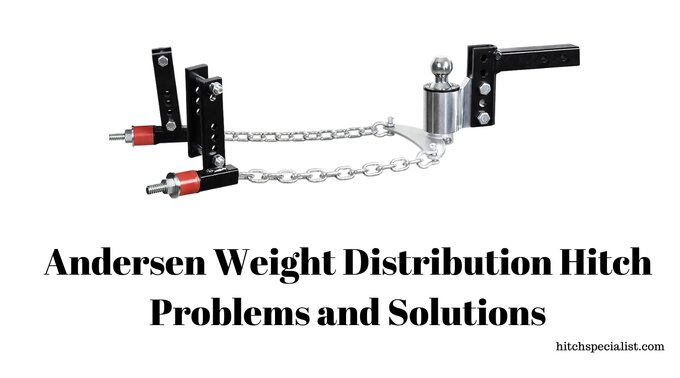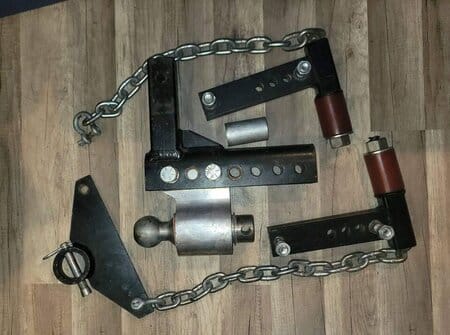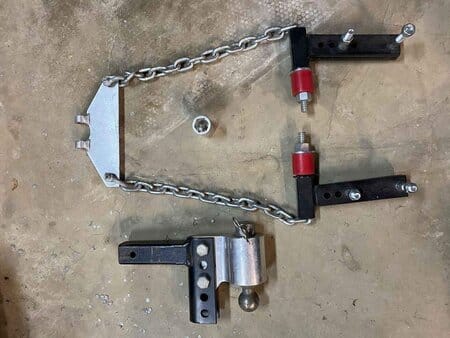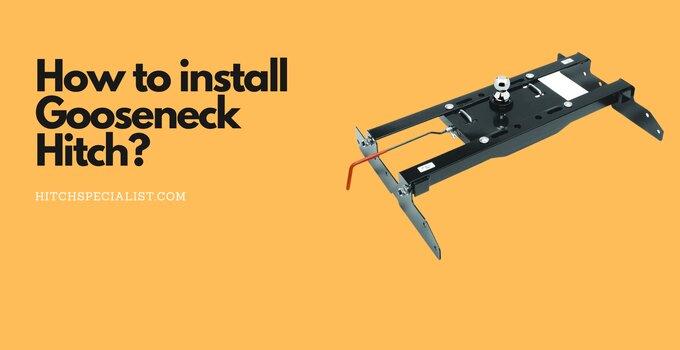Andersen weight distribution hitch is currently one of the best hitches on the market. But even the best hitch can sometimes troubleshoot due to many internal or external technical problems. You probably signed the lifetime warranty if you have directly bought your hitch from Andersen. In that case, Andersen customer service should help you with any problem.
Unfortunately, most users buy the hitches from the dealers or websites, so it is tough to detect the actual Andersen weight distribution hitch problems. We have been using the classic Andersen wdh for the past seven years. So, based on our experience, we have shared some tips and tricks to detect these problems and solutions below.

Is Andersen Hitch a good brand?
Andersen changed the scenario of conventional wdh systems and brought the latest anti sway weight distribution hitches. One of the popular hitches of the brand is the Andersen no sway hitch. In addition to the quality hitches they produce, Andersen is famous for its trailer accessories. The Motion-Dampening™ technology they use in their weight distribution system prevents sway and transfers weight, providing a smooth and steady ride. Besides, they have good after-sales service, and the products are long-lasting.
Andersen Weight Distribution Hitch Problems with Solutions: At A Glance
| Problem | Solution |
|---|---|
| Fish plate welding | Installing proper hitch pins |
| Extreme noise | Reinstalling tapered balled/ Changing ball mount |
| Bed damage | Reinstalling pin box |
| Sway control not working | Consult hitch professional |
| Loose connection | Check connections regularly and lubricate less |
1) Fishplate welding

Fishplate or ‘A-frame dysfunction is the only problem we see people face most but the solutions are not specific. It happens when the ¼ inches A-frame of the hitch doesn’t align with the trailer frames’ hitch pinholes. For example, Coachmen Apex 2020 RV has a hitch pinhole of ½ inches; to install the hitch, one must add a ½ inches hitch pin and connect the fish plates.
When users directly install it without measuring, the ‘A-frame might loosen up, causing the RV to sway. Also, the tension plates might crush down to stop the RV from swaying. The easiest way to detect is by measuring the hitch pin and fish plates. To confirm, check the status of the tension plates from down to upward.
Solution
We have always advised our readers to read the manuals first and always measure every accessory of a hitch.
First, measure the hitch pin; if the hole is bigger than ¼ inches, then get a minimizing bolt, and if less than ¼ inches, then get maximizing hitch pins.
These pins will not affect the bracket positioning. Still, we advise you to position the brackets 1.78 inches more than your usual preference to make the hitch work properly.
2. Extreme noise
Andersen weight distribution hitches make noise, but sometimes the noise becomes unbearable, which is a sign of anti sway cones or trailer coupler damage. The ball housing has an open space inside to insert the anti sway ball mount assembled in the factory.
Spring clips usually hold the ball mount, and it is pressed quite tightly to let the anti sway tapered ball do its job. The ball assembly doesn’t come off, but due to use, it may drop down to three inches at max; if the ball mount goes above three inches, the triangle plate metal conflicts with the chain tension cone, causing the noise.
If the friction line wears out, it hits the trailer coupler every time the tow vehicle moves. Again, this creates a metal vs. metal situation, causing the Andersen hitch to make a deafening noise and damaging the coupler on the way.
Solution
Connect your RV and hitch with a wheel chock. Then raise the Andersen hitch using your tongue jack and gently take off the Andersen weight distribution hitch. Secure it with bolts and spring clips to the initial installing position for the friction line.
For the ball mount for the trailer coupler, you might have to replace it with a new one and reinstall it. Sometimes changing the frame brackets solves the problem.
3. Bed damage
The design of the pin box sometimes damages the bed of the truck. It happens when the hitch tongue weight capacity and set screws are more than the actual trailer gross weight. Also, generally, Andersen hitches work well with lighter trailers.
Also read: 5 Best Adjustable trailer Drop Hitches For Lifted Trucks
Solution
As soon as you detect this problem, replace your hitch with the appropriate weight capacity. For safety, we recommend installing the pin box elsewhere. Some of you use adapters or tongue jack from the brand, but it will damage the truck bed in the long term. So, the best way is to consider the weight rating first.
Also read: Fifth Wheel Hitch installation On A Short Bed Truck
4. Sway control not working

If there’s no sway reduction in your journey and your trailer doesn’t align with your tow vehicle, the sway control is not working. This is by far the easily detectable problem and often the rarest. The cases of sway control not working with Andersen are very few.
This happens when the Andersen no sway hitch is installed improperly, or the sway control is faulty. Also, if there’s not enough weight to tow from the front axle to the rear axle, the Andersen hitch might not work.
However, if it were an equalizer hitch, you might have to buy a new one.
Also read: Andersen vs Equal-i-zer hitch
Solution
Consult a hitch mechanic or read our hitch installation guidelines if you don’t know how the hitch installation process works. Also, you can check out Andersen Weight Distribution Hitch Review, where we have shown the exact installation process.
5. Loose connection
Most sway hitches need lubrication to prevent corrosion and keep the mechanism working. The hitch ball slips from the joining point if an Anderson hitch is lubricated too often. It leads to a loose connection, and sometimes the hitch opens up the mid highway. The easiest way to detect it is by checking the hitch. If you find the hitch is moving too much without any force.
Solution
Regularly check every hitch connection and lubricate sway hitch balls every fall and spring at the highest side. Avoid lubricating with cheap oils, and do not tow over the general towing capacity of the hitch. Stay away from towing large vehicles of your hitch’s capacity. Most importantly, use sway bars instead of standard hitch heavy bars.
Also read: 4 ways to Remove Rusted Trailer Hitch Ball
Conclusion
Despite these, Andersen hitch nurses may face other common problems like a bent hitch, tire puncher due to hitch, and shaky highway rides. Most of these same problems occur due to faulty installation processes and other cases of defective products.
In both cases, we recommend you to contact their customer service or warranty service and get replaced. That is an easier way if you don’t want to DIY. Also, always read the manual before anything.
Also read our other weight distribution posts:
- 5 Best Eaz Lift Weight Distribution Hitch Reviews
- Reese Strait-line wdh Hitch Review
- Fastway e2 weight distribution hitch
- Eaz lift Recurve r6 Weight distribution hitch
- Eaz lift Recurve r3 hitch
- Blue ox sway pro Weight Distributing Hitch
- How to Choose the Right Weight Distribution Hitch Size?
- Weigh Safe Hitch Problems and Proven Solutions



